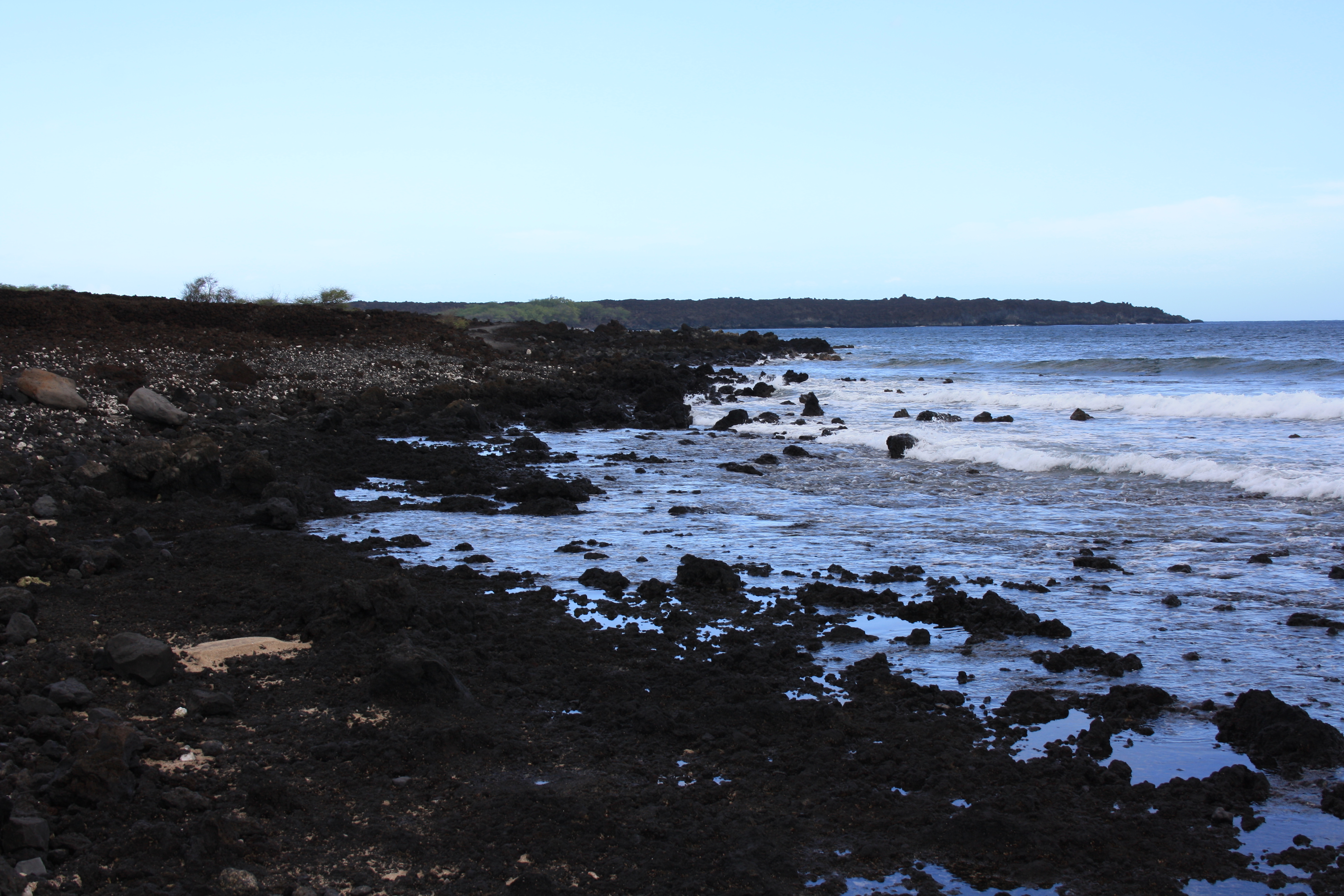La Perouse Bay on:
[Wikipedia]
[Google]
[Amazon]
 Keoneōio Bay is located south of the town of
Keoneōio Bay is located south of the town of
Wailea, Hawaii
Wailea is a census-designated place (CDP) in Maui County, Hawaii, United States. As of the 2020 census, it had a population of 6,027. Prior to 2010, the area was part of the Wailea-Makena census-designated place. The community was developed in ...
at the end of Mākena Alanui Road (State Highway 31) at . The bay's Hawaiian name is Keoneōio.
It was not later named for the French explorer Captain Jean-François de Galaup, comte de La Pérouse
Jean-François is a French given name. Notable people bearing the given name include:
* Jean-François Carenco (born 1952), French politician
* Jean-François Champollion (1790–1832), French Egyptologist
* Jean-François Clervoy (born 1958), Fr ...
. But has been referred to the French explorer. In 1786, La Pérouse surveyed and mapped the prominent embayment
A bay is a recessed, coastal body of water that directly connects to a larger main body of water, such as an ocean, a lake, or another bay. A large bay is usually called a gulf, sea, sound, or bight. A cove is a small, circular bay with a na ...
near the southern cape of Maui opposite the island of Kahoolawe
Kahoolawe (Hawaiian: ), anglicized as Kahoolawe (), is the smallest of the eight main volcanic islands in the Hawaiian Islands. Kahoolawe is located about southwest of Maui and also southeast of Lānaʻi, and it is long by wide, with a total l ...
. The bay is the site of Maui's most recent volcanic activity, about 500 years ago. The rounded peninsula that dominates the northern half of the bay and extends up the coast a short distance was formed about 900,000 years ago by an eruption of basalt
Basalt (; ) is an aphanitic (fine-grained) extrusive igneous rock formed from the rapid cooling of low-viscosity lava rich in magnesium and iron (mafic lava) exposed at or very near the surface of a rocky planet or moon. More than 90 ...
ic lava
Lava is molten or partially molten rock (magma) that has been expelled from the interior of a terrestrial planet (such as Earth) or a moon onto its surface. Lava may be erupted at a volcano or through a fracture in the crust, on land or un ...
that originated in the southernmost landward expression of the Haleakalā
Haleakalā (; Hawaiian: ), or the East Maui Volcano, is a massive shield volcano that forms more than 75% of the Hawaiian Island of Maui. The western 25% of the island is formed by another volcano, Mauna Kahalawai, also referred to as the West ...
Southwest Rift Zone. A small string of cinder cones extending inland to the northeast marks the axis of the rift zone
A rift zone is a feature of some volcanoes, especially shield volcanoes, in which a set of linear cracks (or rifts) develops in a volcanic edifice, typically forming into two or three well-defined regions along the flanks of the vent. Believed t ...
.
Keoneʻōʻio lies directly south of the Ahihi-Kinau Natural Area Reserve. Fishing is prohibited within the reserve, which is home to many endemic
Endemism is the state of a species being found in a single defined geographic location, such as an island, state, nation, country or other defined zone; organisms that are indigenous to a place are not endemic to it if they are also found else ...
and other fish species
In biology, a species is the basic unit of classification and a taxonomic rank of an organism, as well as a unit of biodiversity. A species is often defined as the largest group of organisms in which any two individuals of the appropriate s ...
, marine mammal
Marine mammals are aquatic mammals that rely on the ocean and other marine ecosystems for their existence. They include animals such as seals, whales, manatees, sea otters and polar bears. They are an informal group, unified only by their ...
s, green sea turtles
The green sea turtle (''Chelonia mydas''), also known as the green turtle, black (sea) turtle or Pacific green turtle, is a species of large sea turtle of the family Cheloniidae. It is the only species in the genus ''Chelonia''. Its range exten ...
, and coastal plants. The area contains many archaeological sites, including fishing shrines, salt pans, and heiau
A ''heiau'' () is a Hawaiian temple. Made in different architectural styles depending upon their purpose and location, they range from simple earth terraces, to elaborately constructed stone platforms. There are heiau to treat the sick (''heia ...
, or religious platforms. The road ends at the parking lot/entrance to the seashore and marks the start of the King's Highway, a trail that circumnavigated the island, originally built by Piʻilani
Piʻilani ("ascent to heaven") (born ca. 1460) ruled as Mōʻī of the island of Maui in the later part of the 15th century. At the time Maui was an independent kingdom within the islands of Hawaii.
He was the first ''Aliʻi'' to unite the is ...
and later improved by Governor Hoapili, sometimes called the Hoapili trail.
References
Further reading
* Bays of Hawaii Beaches of Maui Bodies of water of Maui {{Hawaii-geo-stub